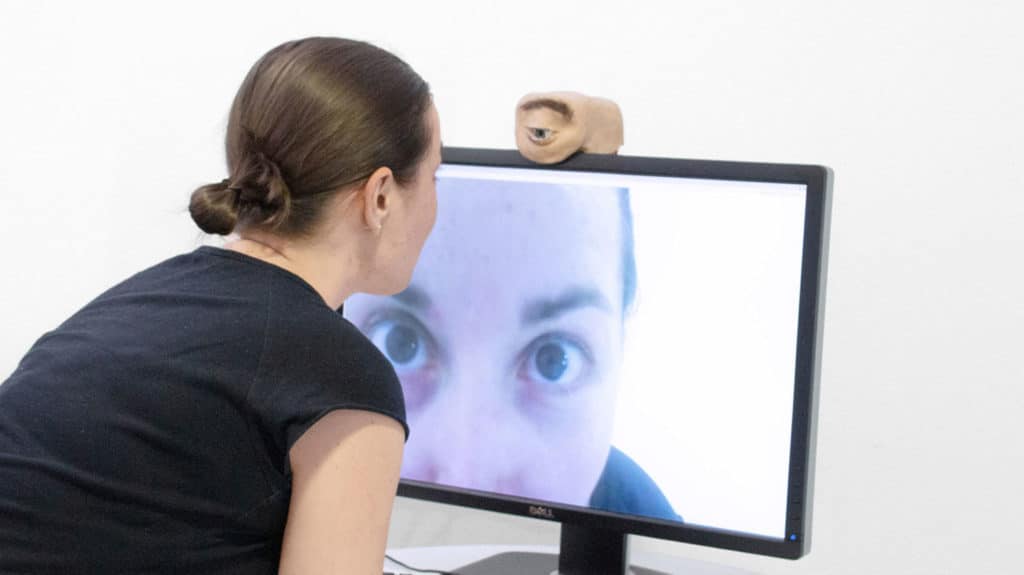We all know that technology has become an integral part of our lives before we could even understand. We are surrounded by devices capable of tracking us, listening to us, and observing us. Microphones and cameras are installed everywhere today: in smartphones, laptops, even in refrigerators and televisions. Many people are now used to their presence and no longer see them for what they actually are – omnipresent eyes and ears.
A team of computer scientists led by Marc Teyssier at Saarland University in Germany is now exploring the dynamics of the relationship, with a creepy webcam prototype that resembles a human eye: the Eyecam. The anthropomorphic webcam not only looks like a human eye but also realistically imitates unconscious eye movements such as blinking or raising the brow.

The goal of the project is not to develop a ‘better’ design for cameras but to spark a discussion around the topic of sensing devices. As the team points out, its project highlights the issues around privacy that these sensing devices bring up.
Eyecam is composed of three main parts: the skin layer, the (robotic) musculoskeletal system, and the eyeball with a seeing pupil actuated eyelids and actuated eyebrow. Inside the eyeball is a tiny 720p/60fps video camera connected to the Raspberry Pi Zero board and six servo-motors positioned optimally to reproduce the different eye muscles. The motors replicate the lateral and vertical motion of the eyeball, the movement of the eyelids closing and the eyebrow moving.

The whole thing plugs into the host computer’s USB port that is simply detected by the computer as a conventional plug-and-play webcam. It is also equipped with a facial recognition algorithm to identify its owner, being able to even outline emotions such as irritation and disappointment. If it detects the user was looking tired, for instance, it could likewise make the eye look droopy and fatigued.
“We want to draw attention to the fact that we are surrounded by sensing devices every day. That raises the question of how that affects us,” says Teyssier.
“Our application scenarios are fictional and are intended to encourage people to think about how we interact with technical devices today, but also in the future. The special thing about our experiments is that we can experience and relate our imagined scenarios with the help of a physically available prototype,‘ he added.
In order to reach as many people as possible with their food for thought, the scientists have made its Eyecam available for anyone to build as Open-Source on GitHub. They will present a paper on the project next month via the online ACM Conference on Human Factors in Computing Systems that can already be accessed online.
